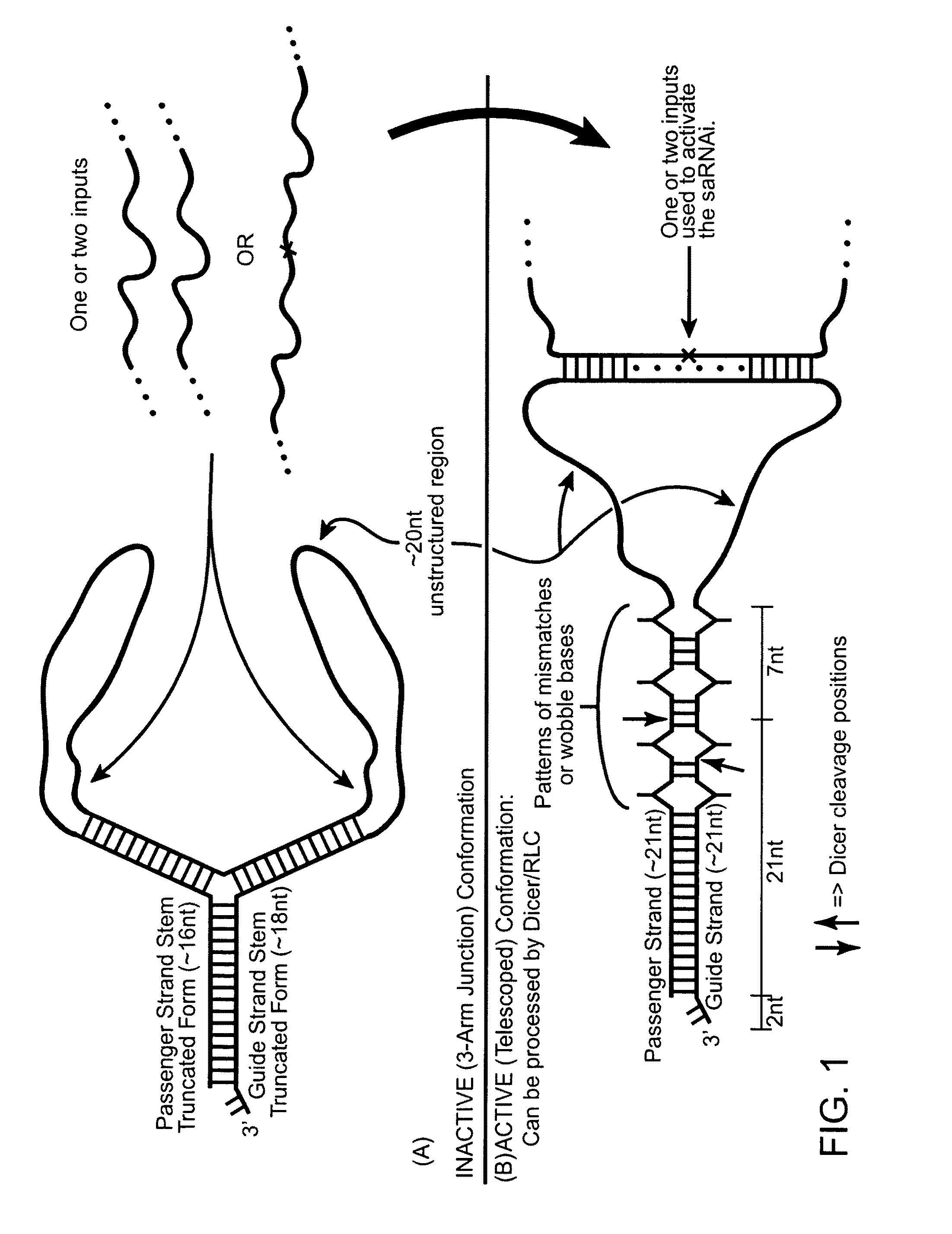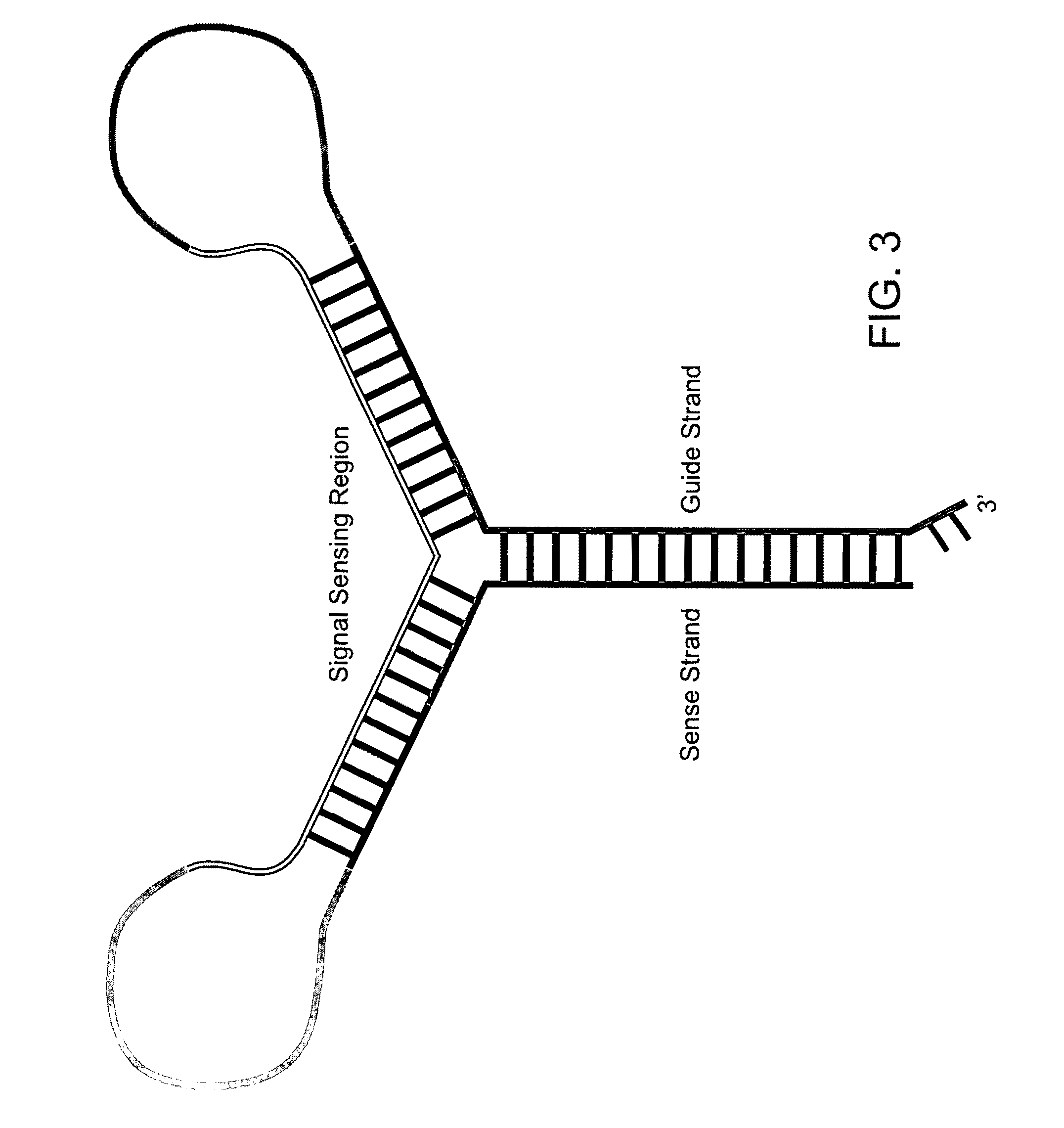Signal activated RNA interference
a signal activation and signal technology, applied in the field of signal activation rna interference, can solve the problems of insufficient repression of disease-associated mrna, insufficient killing of either mutant gene, and non-specific harm to healthy cells and tissues, so as to eliminate the steric hindrance
- Summary
- Abstract
- Description
- Claims
- Application Information
AI Technical Summary
Benefits of technology
Problems solved by technology
Method used
Image
Examples
Embodiment Construction
I. Overview
[0189]The present invention provides various constructs that modulate target gene expression through the RNA interference (RNAi) pathway, which constructs may be described as signal-activated polynucleotide constructs (SAPs or SAPCs). Such signal activated polynucleotide constructs are advantageous over the traditional RNAi constructs in several respects.
[0190]For example, the subject signal activated polynucleotide constructs are only activated in cells with known disease signatures, therefore, any associated side effects are minimal. Secondly, the subject signal activated polynucleotide constructs uses disease-associated RNA as signals to activate RNA interference against target not limited to the disease-associated RNA itself. This opens a new avenue for disease prevention or intervention by disrupting the function of critical cellular pathways, induce apoptosis or inflammatory responses, or other effective anti-disease responses, only in the disease cells. Furthermore...
PUM
| Property | Measurement | Unit |
|---|---|---|
| base-to-base stretch distance | aaaaa | aaaaa |
| base-to-base stretch distance | aaaaa | aaaaa |
| base-to-base stretch distance | aaaaa | aaaaa |
Abstract
Description
Claims
Application Information
 Login to View More
Login to View More - R&D
- Intellectual Property
- Life Sciences
- Materials
- Tech Scout
- Unparalleled Data Quality
- Higher Quality Content
- 60% Fewer Hallucinations
Browse by: Latest US Patents, China's latest patents, Technical Efficacy Thesaurus, Application Domain, Technology Topic, Popular Technical Reports.
© 2025 PatSnap. All rights reserved.Legal|Privacy policy|Modern Slavery Act Transparency Statement|Sitemap|About US| Contact US: help@patsnap.com



